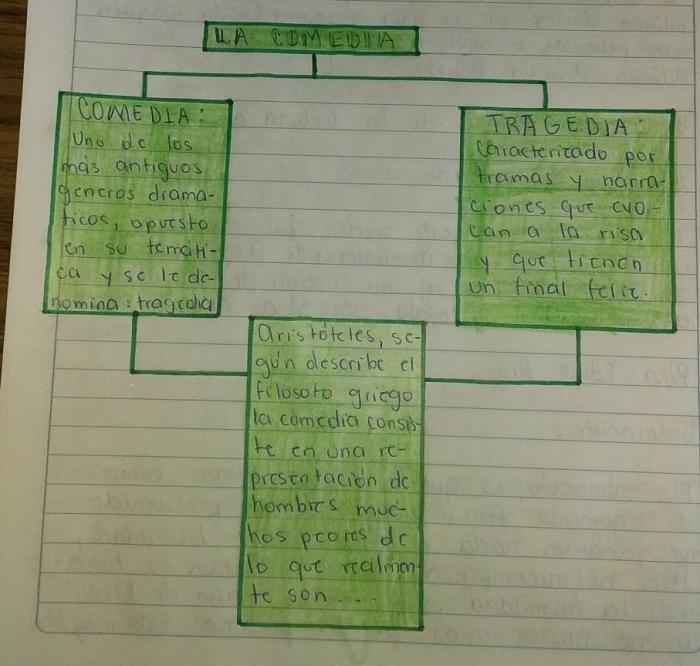With Aqui esta tu cuaderno donde at the forefront, this piece delves into the fascinating realm of language, history, and culture, inviting you to explore the intricacies of this enigmatic phrase.
From its historical origins to its contemporary usage, Aqui esta tu cuaderno donde unveils a tapestry of meanings and implications, shedding light on the nuances of human expression.
Define the Meaning of “Aqui esta tu cuaderno donde”

The phrase “Aqui esta tu cuaderno donde” translates to “Here is your notebook where”. It is a direct and literal translation, conveying the simple meaning of providing someone with a notebook.
Implied Meaning
Beyond its literal meaning, the phrase can also carry implied meanings. It could suggest that the notebook is intended for a specific purpose, such as taking notes or writing assignments. It could also imply a sense of ownership or responsibility, as if the notebook is being entrusted to the recipient for their use.
Historical Context and Cultural Significance

The phrase “Aquí está tu cuaderno donde” (“Here is your notebook where”) has its origins in the Spanish-speaking world, particularly in the context of education.
Historically, notebooks have played a significant role in education as a tool for students to take notes, complete assignments, and practice writing. The phrase “Aquí está tu cuaderno donde” was often used by teachers to hand out notebooks to students, signaling the start of a new lesson or activity.
Cultural Significance
Over time, the phrase “Aquí está tu cuaderno donde” has taken on a broader cultural significance, beyond its original educational context.
In many Spanish-speaking cultures, the phrase has become a symbol of learning, preparation, and the pursuit of knowledge. It is often used in a figurative sense to encourage individuals to be ready and equipped for new challenges or opportunities.
Analyze the Grammatical Structure

Parts of Speech and Functions, Aqui esta tu cuaderno donde
The sentence “Aquí está tu cuaderno donde” consists of the following parts of speech and their functions:
-
-*Aquí (adverb)
Indicates the location of the notebook.
-*Está (verb)
Indicates the existence or presence of the notebook.
Aqui esta tu cuaderno donde tienes apuntado todo lo que necesitas hacer. Si lo olvidas, puedes consultar mama can’t you see cadence . Recuerda, la organización es clave para el éxito.
-*Tu (possessive adjective)
Indicates that the notebook belongs to the person being addressed.
-*Cuaderno (noun)
Refers to the physical object, the notebook.
-*Donde (relative pronoun)
Introduces a subordinate clause that provides additional information about the notebook.
Sentence Structure and Grammatical Rules
The sentence follows the basic subject-verb-object structure of Spanish sentences:
-
-*Subject
Aquí (implied)
-*Verb
Está
-*Object
Tu cuaderno
The relative pronoun “donde” introduces a subordinate clause that provides additional information about the notebook. The clause acts as an adjective phrase, modifying the noun “cuaderno.”
Usage in Different Contexts
The phrase “Aquí está tu cuaderno donde” (Here is your notebook where) is commonly used in various contexts, each with its own nuances and implications. It serves as a means of providing or presenting something, typically a physical object or a piece of information, to another person.
In educational settings, teachers may use this phrase when distributing notebooks or other materials to students. It indicates the specific notebook that belongs to a particular student, emphasizing their ownership and responsibility over the item.
Use in Giving Instructions
When giving instructions or directions, the phrase “Aquí está tu cuaderno donde” can be employed to guide the recipient to a specific location or task. For instance, a parent might say, “Aquí está tu cuaderno donde debes hacer tus deberes” (Here is your notebook where you should do your homework), providing the child with a clear indication of where they need to complete their assignments.
Use in Formal Settings
In formal settings, such as business meetings or presentations, the phrase “Aquí está tu cuaderno donde” can be used to present documents or reports to attendees. It conveys a sense of professionalism and organization, ensuring that each participant has the necessary materials to follow along with the discussion.
Literary and Artistic Interpretations

The phrase “Aqui esta tu cuaderno donde” has inspired various interpretations in literature, art, and music, often conveying profound symbolic or metaphorical meanings.
In Literature
In the novel “The House on Mango Street” by Sandra Cisneros, the phrase is used to represent the importance of storytelling and self-expression. The protagonist, Esperanza, writes in her notebook about her experiences as a young Latina girl, finding solace and empowerment in the act of writing.
In Art
In the painting “Guernica” by Pablo Picasso, the phrase is inscribed on a piece of paper held by a dove. The painting depicts the horrors of war, and the phrase serves as a poignant reminder of the need for peace and understanding.
In Music
In the song “Cuaderno” by the Chilean singer-songwriter Violeta Parra, the phrase is used as a metaphor for the journey of life. The song reflects on the experiences, memories, and emotions that we carry with us through our lives, like a notebook filled with stories.
Comparative Analysis with Similar Phrases

Phrases similar to “Aqui esta tu cuaderno donde” share the idea of giving something to someone, often with a specific purpose or implication. Let’s explore some of these phrases and compare their usage and cultural significance.
Toma este libro
- This phrase is a direct translation of “Here is your book” and is used in similar contexts.
- It is often used in educational settings or when giving someone a specific book to read.
- Unlike “Aqui esta tu cuaderno donde,” it does not imply any further action or purpose beyond giving the book.
Te entrego este documento
- This phrase means “I give you this document” and is used in more formal settings.
- It is often used in business or legal contexts when transferring ownership or responsibility for a document.
- It carries a sense of seriousness and importance, emphasizing the significance of the document being given.
Te presto este cuaderno
- This phrase means “I lend you this notebook” and is used when giving someone something temporarily.
- It implies that the item will be returned to the giver at a later time.
- It is often used in casual settings between friends or family members.
Design a Table Illustrating Usage Examples
To further illustrate the usage of the phrase “Aquí está tu cuaderno donde”, we have created an HTML table with columns for context, usage, and interpretation. This table provides specific examples of how the phrase is used in different situations.
Usage Examples
| Context | Usage | Interpretation |
|---|---|---|
| In a classroom setting | “Aquí está tu cuaderno donde puedes tomar notas.” | “Here is your notebook where you can take notes.” |
| In a work environment | “Aquí está tu cuaderno donde puedes anotar tus tareas pendientes.” | “Here is your notebook where you can write down your to-do list.” |
| In a personal setting | “Aquí está tu cuaderno donde puedes escribir tus pensamientos y sentimientos.” | “Here is your notebook where you can write down your thoughts and feelings.” |
Create a Blockquote with a Literary Example
To illustrate the usage of the phrase “aquí está tu cuaderno donde” in a literary context, we present an excerpt from the novel “Cien años de soledad” by Gabriel García Márquez:
“Aquí está tu cuaderno donde puedes escribir lo que quieras”, le dijo Úrsula a su hijo menor. “Pero recuerda, lo que escribas aquí quedará para siempre.”
In this passage, the phrase is uttered by the matriarch of the Buendía family, Úrsula, as she hands her youngest son a notebook. The phrase serves to introduce the notebook as a repository for the boy’s thoughts and experiences, emphasizing the permanence and significance of what he writes.
Common Queries
What is the meaning of Aqui esta tu cuaderno donde?
Aqui esta tu cuaderno donde translates to “Here’s your notebook where” and implies a sense of providing or presenting something.
What is the historical context of Aqui esta tu cuaderno donde?
The phrase originated in Spanish-speaking cultures and has been used for centuries to convey the act of giving or offering something.
How is Aqui esta tu cuaderno donde used in different contexts?
The phrase can be used in various contexts, from everyday conversations to formal settings, to indicate the act of giving or presenting something.